Wednesday, December 31, 2014
This Video Debunks 10 Misconceptions About Common House Pets
You've probably heard a lot of things about dogs, cats, and other typical pets, but some things are exaggerated or untrue. This video clears up 10 popular myths and old wives' tales so you can be the best pet owner you can be.
Elliott Morgan breaks down the biggest misconceptions about our furry—and scaled—friends in the video above from the Mental Floss YouTube channel. You'll get the skinny on how there aren't really hypoallergenic pets, dog's mouths aren't actually cleaner than ours, rabbits aren't short-term pets, cats might be allergic to milk to fish (so don't give it to them), and that putting a dog in a yard doesn't mean it will exercise. Break out the leash, people, and get walkin'. Whether you're a cat or dog person, owning a pet is a big responsibility, so it's important you have correct information about them.
Misconceptions about Pets | YouTube
Develop Emotional Intelligence by Learning How You Sound to Others
Sometimes what we say doesn't go over very well, regardless of our intent. There's a difference between what we mean when we say something and how it comes across to other people. Learning that difference is an important aspect of becoming emotionally intelligent.
Emotional intelligence can help you be more aware of how you and others really feel about something. It allows you to adjust your behavior and adapt to situations so that others find you likable. In turn, it can help you build better relationships in your personal and professional life. Muriel Maignan Wilkins at the Harvard Business Review explains that being emotionally intelligent involves being aware of the gap between intent and impact:
Those with weak emotional intelligence often underestimate what a negative impact their words and actions have on others. They ignore the gap between what they mean to say and what others actually hear... Regardless of what you intend to mean, think about how your words are going to impact others and whether that's how you want to them to feel.
Before you say something, stop, and take a moment to think about how it might sound. Ask yourself how you would feel if someone told you the same thing. Are you making the kind of impression you want to make? Remember, even if you mean well, make sure it sounds like you mean well.
Signs That You Lack Emotional Intelligence | Harvard Business Review
Photo by Leon Fishman.
SmartVideo for YouTube Fixes Buffer Problems on Slow Connections
Chrome/Firefox: If you're on a slow internet connection, YouTube's unbearable to use. It never seems to know when to start playing and when to stop buffering. SmartVideo for YouTube gives you control over all that.
SmartVideo gives you control over YouTube buffering in all sorts of ways. You can set it up so the buffer has to fully load before the video will play, or leave it on the "smart buffer" that decides when to start playing the video based on your download speed. There are a few other little options built into SmartVideo, but its main appeal is the minute control you get over buffering. If you're stuck on a slow connection, it makes YouTube a lot more bearable.
SmartVideo for YouTube | Chrome Web Store
SmartVideo for YouTube | Firefox Add-Ons
Commonly Overlooked Money Leaks that Drain Your Budget
The end of the year can be a great time to review your spending and zero in on a year's worth of pervasive money leaks—you know, those areas where dollars seemingly seep out of your budget. Here's a few common money leaks, and how to plug them.
This post originally appeared on LearnVest.
And before you know it, a good chunk of money has gone down the drain.
Some of the leaks are easy to pinpoint: Is your electric bill higher than last year's? Dial down your thermostat a few degrees. Credit card interest go up a few percentage points? It's time to call your credit card issuer to request a lower APR.
Other money leaks may be harder to suss out, often because they happen inadvertently when you're trying to catch a deal.
They can strike when you're at the register, getting tempted by a half-off impulse buy. Or when you shell out for a service or membership that you think you're totally going to use—only to discover that you haven't thought about it in months.
So in the spirit of the holiday season, we're gifting you with an actionable game plan that will show you how to save money in the coming year by plugging some of the biggest (and sneakiest) money leak offenders—well before you flip the calendar on a fresh new financial year.
Money Leak #1: Gratuitous Digital Subscriptions
One of the first places people tend to look for cost savings is the much-maligned cable bill. And while it's certainly reasonable to cut the cord if you're only watching, say, 15 of the 500 channels you pay for, cable isn't the only culprit of wasted subscription spending.
In fact, all of those smaller online services you subscribe to—think Amazon Prime and Spotify—can add up, and quickly surpass your cable bill in price.
By one estimate, the common digital services that the average person subscribes to—including dating sites, e-books, music services, gaming sites and online newspaper subscriptions—add up to about $156. That's over $40 more than the average cable bill of $112 a month.
Plugging It: One reason we might overlook such subscriptions is because their smaller fees, usually the equivalent of a lunch out or a cocktail at happy hour, may not feel like they'll have a big impact—at least not on a monthly basis.
"I find it helpful to calculate how much you pay per year," says Miranda Reiter, a CFP® and founder of She & Money Financial Planning. "Paying $15 per month for a service may not raise any red flags, but $180 per year might give you a good reason to halt the service."
So Reiter suggests taking five minutes to measure your digital service usage each month. "If you notice that you are consistently not getting your money's worth, think about why, and if the next month will be any different," she says. "If not, it's probably time to cancel."
Just keep in mind that a subscription may be worth keeping if it allows you to get rid of another cost completely. For example, if getting a standalone HBO GO subscription once it's available next year (the rumored price is about $15 a month) means you can nix your much more expensive premium cable package that includes HBO (which you only got for Game of Thrones, anyway), then you'll be netting a sizable cost savings.
Money Leak #2: Unlimited Memberships
You can buy an unlimited membership for just about any product or service nowadays: going to the gym, getting your car washed, catching the latest release at the movie theater. You name it, and there's a way to get a better deal. So why should you pay à la carte when, for a little bit more, you can get an all-you-can eat/buy/download/workout deal?
But the perceived value of an unlimited membership is often different from reality. One study of gym-goers found that those who chose a flat membership of about $70 per month, instead of paying $10 per class, only hit the gym an average of 4.3 times per month—which ultimately meant they paid about $17 per class.
Plugging It: "I find that some people hang on to these types of memberships even when they aren't using them, particularly fitness memberships, because they hope to actually start taking advantage of them at some point," Reiter says. "But the truth is that an entire year could pass without using your membership, costing you hundreds. So determine if it is the right thing for you right now."
This means calculating how many times you'd need to take advantage of the membership in order for the fee to pay off, says Reiter. In the process, you may find that the à la carte option, or perhaps a month-to-month membership with no termination fees, provides better bang for your buck. The participants in the gym study, for instance, ended up wasting an average of $600 over the course of their membership.
Better yet, look into free or lower-cost alternatives for the services, such as a free fitness apps, that can still give you the workout (and motivational boost) you need.
Money Leak #3: Free Trial Offers
Most of us know better than to accept a free trial of the latest herbal weight loss supplement or an experimental tooth-whitening product. But many perfectly legitimate businesses also let you try before you buy in the hopes of ferreting out would-be loyal customers—magazine publishers, satellite radio services and career sites like LinkedIn, to name a few.
So why not take advantage of a "no commitment necessary" offer?
Here's the rub: If you don't consider the service worth it, it can be easy to forget to cancel before the fee kicks in—or you may find that the company tries to stall you by making it too hard to cancel.
Plugging It: Judith A. McGee, a CFP® and C.E.O. of McGee Wealth Management, says to look for one telling sign that your free trial will be costing you. "If you enter your credit card information [to redeem the trial], you're more likely than not to get a bill," she says.
Another "buyer beware" signal? The company makes it near impossible to get rid of the service. If you can't simply hit "cancel" somewhere in your account settings area, there's probably a reason why—the longer it takes you to figure out their system, the more likely they'll be able to squeeze another month out of you.
"Calling [the company] can be a big ordeal and not necessarily something you can do during work hours," says personal finance blogger and money coach Zina Kumok. "I recommend using gethuman.com to find the best number for customer service—they even tell you which numbers to press to automatically get through to a real person."
And if that doesn't work, you can always try to virtually log your complaint in 140 characters or less. "Using social media can pressure a company to respond to you quickly," Kumok adds.
Money Leak #4: Deals With a Shelf Life
How many times have you looked at a "get $50 worth of [fill in the blank] for $25" deal you bought and thought: This expires tomorrow—and I'm not going to use it in time!
If you've experienced that stomach-sinking feeling that comes from realizing you've paid $25 for an expired coupon, you're not alone. It happens increasingly often seeing as today-only deals and get-'em-while-they're-hot rewards are constantly being dangled in front of us, prompting us to open our wallets more often than we should, just to take advantage of the deal.
"Limited-time offers featuring 50% to 60% savings are very tempting, but they're also big money leaks because many of these purchased deals go unused," says consumer savings expert Andrea Woroch. "With expiration dates, blackout times, limitations on dates for redemption, and inconvenient locations, you may end up with deals you can't use—although the money you spent on the voucher never expires."
Plugging It: There has been some consumer noise raised over such offers, and in 2012 Groupon had to pay out $8.5 million to settle a class-action lawsuit brought on by consumers disgruntled about coupon expiration dates. But apart from suing, what can you do to help make sure you don't fall into the expiration trap?
For starters, if you use a deals site where you keep your credit card information stored, remove the info to lower the convenience factor for yourself. "The time it takes to get your credit card and [input the info] will give you time to rethink the purchase," Woroch suggests. "Many people often press purchase before thinking it through."
If you want to remove the temptation for an impulse buy altogether, unsubscribe from the emails completely. But if you have a coupon you already bought and want to unload, Woroch suggests selling unwanted and unused daily deals at couprecoup.com, so you can at least try to get some of your money back.
Money Leak #5: Shipping Fees
While you may view shipping fees as a necessary cost to swallow for the convenience of online shopping, companies are using it as a strategy for getting you to fill that virtual shopping cart.
"Recently, retailers have increased their free shipping offers to boost online sales," Woroch says. "Best Buy Co., for instance, raised the free shipping minimum from $25 to $35 knowing that people are likely to add more to their carts to get free delivery."
Which means you're left between a rock and a hard place: Shell out for shipping, or shell out for more stuff?
Plugging It: Of course you can always commit to shopping only at retailers that always offer a free shipping option—like Nordstrom, Zappos and Target—but there will likely be times when that size 14 shoe can't be found just anywhere.
When that happens, Woroch likes to look for free shipping codes at sites like CouponSherpa.com and FreeShipping.org. But if you still can't find what you want, call or open a live chat with a customer service rep to inquire what offers may be available—they'd probably rather throw you a bone than lose what's in your cart.
"They may even be willing to waive the shipping fee," she says. "I've had luck getting free shipping by calling customer service at LOFT, Ann Taylor and West Elm."
The other option? Eschew the shipping altogether and arrange for convenient and free in-store pickup. Bonus: You may even get your items faster this way, since many offer same-day delivery. Kmart and Sears even offer free cross-store pickup, so you can order through Sears.com but have it picked up at Kmart, and vice versa.
One other note on free shipping: Always read the store's shipping policies because free may not necessarily go both ways—you may get charged for return shipping or a restocking fee. If they do charge a return fee, "make sure there is a local brick-and-mortar store nearby that accepts online returns," Woroch suggests.
Bottom line? "It's easy to overlook the impact of an extra $5, $10 or $20 here and there," Woroch says. "But when you add up all of those daily, weekly and monthly impulse purchases, you'll find a huge money leak—maybe hundreds of dollars a month, in some cases."
5 Money Leaks That Could Drain Your 2015 Budget—and How to Plug Them | LearnVest
LearnVest Planning Services is a registered investment adviser and subsidiary of LearnVest, Inc., that provides financial plans for its clients. Information shown is for illustrative purposes only and is not intended as investment, legal or tax planning advice.
Image adapted from jesadaphorn and Hanaya chen (Shutterstock). Additional photos by Paul Keller, Daniel Hoherd, Mike Mozart, Daniel Oines, and Derell Licht (Flickr).
Want to see your work on Lifehacker? Email Andy.
Ask Your Advisor How to Test Out of Classes and Get Your Degree Early
With student loan debt, monotonous classes, and a desire to start your life after college, there are plenty of reasons you might want to test out of some classes. Ask your advisor how you can test out and get your degree early.
There are some great benefits to staying in college full term, like taking full advantage of a well-rounded education and networking opportunities. However, there are also solid reasons to get out of a few undergraduate classes you don't really need in your career field anyway. Ask your academic advisor if your school allows students to test out through DSST or CLEP—standardized testing organizations. Also ask about your school's specific guidelines and requirements so the advisor guides you through the process.
The school determines how many credits you can test out of, but Emina Dedic of HackCollege used standardized tests to save a ton of money and get two degrees a year earlier than she would've otherwise. It doesn't hurt to see what opportunities your college has for you.
How to Test Out and Get Your Degree Early | HackCollege
Photo by Will Folsom.
Make Better Decisions with a "Trade Up" Mentality
Every day, we make decisions about how to spend our time and resources. To get better at making the most of those choices, consider each decision a chance to trade up.
As tips blog Becoming Minimalist explains, everything we do in life trades a little portion of ourselves away. Whether it's part of our money, our time, or our energy, we give up something with everything we do. If you're going to give up something, try to make sure you at least get something more valuable in return:
Unfortunately, most of our lives are unintentionally traded down… lived in exchange for a return of limited or temporal value. We never set out to purposefully trade our lives for things of limited value; but in a culture surrounded by similar pursuits, our lives conform too easily.
Of course, only you can determine what's of value to you. Whether that means spending less time on the couch and more time pursuing a cause, or simply choosing to spend less time at work and more time with the people who matter to you, the end goal should be to maximize how much your time is spent on something that's worth it. As opposed to idly going through the "must do" lists we all have in our heads.
We're All Trading Our Lives for Something. Trade Up. | Becoming Minimalist via Rockstar Finance
Photo by 55Laney69.
Muhammad Ali's Best Productivity Tricks
Muhammad Ali is certainly best known as a boxer, but he was also an incredibly productive, inspirational person. He got a lot done in his life, so let's take a look at some of his best tips for gettings things done and enjoying life.
Muhammad Ali is often called the greatest heavyweight boxer in history, but he was also a proponent for religious freedoms, racial justice, and was a conscientious objector during the war. Beyond all that, he was an avid talker, and would often speak out about his general rules for life. While they're not the type of productivity tips you can take and directly apply to your life, his ideas are still useful in defining what it means to get things done.
Your Time's Limited, Make the Most of It
Nobody out there is going to deny that your time is limited, but while "make the most of the time you have" is a cliche, Ali has a great spin on the idea. Throughout countless interviews, Ali would often talk about doing the best with what you have. In a 1975 interview with Playboy, Ali boils it down like so.
The man who views the world at 50 the same as he did at 20 has wasted 30 years of his life.
It isn't just in boxing or sports though. Ali wanted to be the best in everything. In his book, The Soul of the Butterfly, Ali reminds us that a good work ethic is often all that matters:
If I had been a garbageman, I would have picked up more trash quicker and neater than anyone else ever had. If I'd been a reporter who got the chance to spend the day with Muhammed Ali, before I came to the interview, I would have thought long and hard about Ali the other reporters who had interviewed him before me. I would have reviewed all of their stories so that I could get a different perspective.
The point is, your time's limited. It doesn't matter what you're doing, do your best, and when you look back on that time, you'll be a lot happier for it.
Be Confident In Yourself (Even If It's Overblown)
Confidence is one of those hard to nail down things that we're all told to feel. Nobody wants to be meek, but at the same time, most of us don't want to boast at the level that Ali could. However, Ali used that boasting to get through his tougher fights and his confidence, even in defeat, was obvious.
Confidence comes from all kinds of things, but for Ali, it was about taking risks. In an interview with Ebony, Ali famously said:
He who is not courageous enough to take risks will accomplish nothing in life.
We've shown you how to build up your confidence before and while nobody's telling you to boast like Ali, overconfidence can help you out in the long run. The more risks you take, the better off you'll be.
It Doesn't Matter Who You Are, Training Sucks
People like to think that everyone who exercises must love doing it. But anyone who doesn't admit that exercising sucks sometimes is lying to you. The fact is, no matter who you are—whether you're Muhammad Ali or someone from Michigan working on a couch to 5K—training is hard. The quicker you accept that, the better.
In an interview with Newsweek in 1978, Ali talked about his own training:
I hated every minute of it. But I said to myself, 'Suffer now, and live the rest of your life as a champion.'
Most of us aren't going to live out the rest of our lives as champions just because we go to the gym three times a week. But the point to "suffer now so you can kick ass later" is applicable in all walks of life. If you're learning something new, it's going to suck before it's awesome. The same goes for exercising, starting out at a new job,college, and just about every single thing in life.
Sometimes You Lose
Muhammad Ali's record was 56 wins, 5 losses, 0 draws. That is an incredible record, but when you're that good, those five losses can feel like ultimate failures. Despite his boastfulness in winning, Ali was often surprisingly navel-gazing when it came to losing. Before a fight with George Foreman in 1973, Ali told the press:
I never thought of losing, but now that it's happened, the only thing is to do it right. That's my obligation to all the people who believe in me. We all have to take defeats in life.
Moving past failure isn't easy for any of us, but we can all do it. Ali's idea is overly simplistic for most of us, but the point rings true regardless: if you fail, the only thing you can really do is try again and get it right.
Keep Your Friends Close
Typically speaking, when we take a look at productivity and life tips from history, they're very self-reflective. It seems that many famous people throughout history forget friends, but Ali believed friends were the real glue that helped him get things done. He lays it out in an interview with Harold Bell:
Friendship is a priceless gift that cannot be bought nor sold, but its value is far greater than a mountain made of gold; for gold is cold and lifeless - it can neither see nor hear, in time of trouble its powerless to cheer - it has no ears to listen, no heart to understand, it cannot bring you comfort or reach out a helping hand. So when you ask God for a gift, be thankful if sends not diamonds, pearls or riches but the love of real true friends.
Of course, sometimes, good friendships are hard to come by and making friends is a science in itself. Which is exactly why it's worth holding onto the friendships that really matter when you have them.
Penalize Your Bad Habits with an Activity From a Good One
Giving yourself consequences is a great way to motivate you to start a new habit. Rather than simply punishing yourself, every time you partake in a bad habit (like breaking your diet with pizza), compensate with activities from a good one (like doing some pushups).
As tips blog MakeUseOf explains, bad habits are difficult to break, but having "consequences" with positive benefits doubles as a motivator to break the old habit, while also getting the benefit of the new one. For example, the Army particularly likes push-ups as a form of reprimand, because the "punishment" is physically beneficial. You can apply the same concept to your own life:
Whenever you find yourself putting off your work, get your body moving. A 7-minute workout,the thoracic bridge exercise, a sprint, a walk, a swim — anything that gets your blood circulating will do. You can use other positive choices like preparing a healthy meal, drinking a smoothie, or exercising your brain as the corrective activity.
How you pair up your habits can vary based on your routine. It's a good idea to make the consequence habit something that's immediately available when you indulge. So, for example, for every half hour you spend watching TV, do one chore cleaning. Or, for every five minutes you spend on Facebook at work, reply to an office email. Eventually, you'll either start getting in the swing of the new habit, or at least be more aware of and resistant to the old one.
How To Kill Bad Habits With Bad Habits In The New Year | MakeUseOf
Photo by Jason Scragz.
Match a Purchase You Often Make to Kickstart a Savings Fund

If you want to save money, you've likely heard the obvious tricks, like making your own coffee or eating out less often. But if you cut back on things you really enjoy, you also cut back on your happiness. Instead, try matching a purchase you make often to build your savings fund.
You don't need to choose an expense that's large—matching the couple bucks you spend on morning coffee is better than not saving anything. If you can afford to, pick a bigger goal like when you eat lunch or dinner out. Make sure you're consistent about transferring the match to your savings account—or for smaller purchases drop those dollars into a good old fashioned piggy bank. Another upside of this process is that you will start to see what frequent purchases you make and perhaps decide they aren't as enjoyable as you thought. For more tips on launching your savings fund, check out the full post linked below.
10 Ways to Save $1K This Year | Refinery29
Image from ultrakml.
The Financial Steps to Take Before Becoming a Stay-at-Home Parent
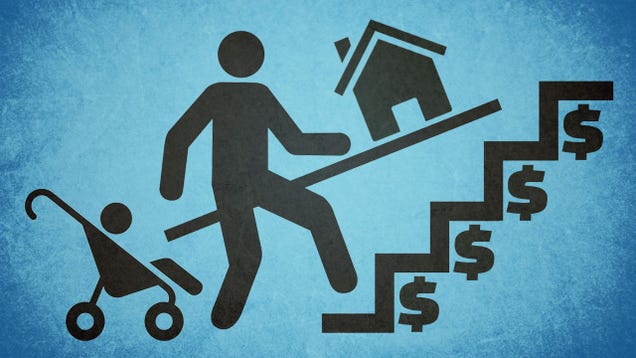
There are a lot of benefits that go along with being a stay-at-home parent, but it can take a big toll on your finances, if you're not careful. The more tuned in you are to where you're at with your savings, spending and debt, the easier it is to make the transition. If you're contemplating becoming a stay-at-home parent, here are some things you need to do, financially.
This post originally appeared on My Bank Tracker.
Compare Income With Spending
The first thing new you should consider is how much you're bringing in each month versus how much is going out. Earning big bucks doesn't really help you out any if you're not able to save anything because your expenses are eating up every penny you make. If you're not already using a budgeting software like Mint to keep tabs on everything, signing up for a free account is a smart move.
When you're running the numbers, make sure you're looking at the bigger picture. Instead of just reviewing last month's spending, go back over the previous year so you can see how your expenses and income have changed over time. If you notice that your spending has crept up in a particular category, take a look at why this happened, and decide if it's something you can cut back on.
Revamp Your Budget
Becoming a stay-at-home parent means typically means making some serious budget changes. Even though you may be spending less on transportation each month since you're not driving to the office anymore, you're now having to factor in the cost of things like diapers and formula. Creating a rough draft of your post-baby budget can give you an idea of what you'll actually be working with.
Giving the new budget a trial run before the baby comes is a good way to see if your plans are realistic. For example, if you're planning to cut back on eating out and reallocate that money towards baby expenses, you could go ahead and start saving the extra cash now. If you want to take things a step further, you could try living on one income for a few months to see if it's feasible, based on what you anticipate your budget will look like.
Check Your Insurance Coverage
There's no denying that having a baby is expensive; the cost of delivery alone can run from $10,000 to $20,000, depending on whether there are any complications. If you've got excellent health insurance that shouldn't be a problem but if you don't, you're probably going to be looking at a big bill.
Not only that, you also have to think about how the stay-at-home parent will be affected in terms of losing their health insurance coverage after they leave their job. If you're the working spouse and you're covered through your employer, then it may just be a matter of adding them and the new baby on to the policy but that could mean your premiums will go up substantially. On the other hand, if you were covered on their plan, then you could be looking at buying a whole new policy, which can also add up to a major expense.
Adjust Your Savings Strategy
Building up a nice cushion of cash is a smart move for anyone, but it's particularly important for new parents who are going to see their income take a dip. Having a little bit extra in the bank can ease some of the financial anxiety that can sometimes go along with being a stay-at-home parent.
It's also wise to think about how expanding your family is going to impact your ability to save for long-term goals, like retirement. If the person who's going to be staying at home has a 401(k) through their employer, you have to decide what to do with the money if they won't be going back to their old job. You may also consider setting up a Spousal IRA so they're still able to build a nest egg of their own.
At some point, you'll have to decide whether saving for college is something you can afford to do. The earlier you start saving, the better so if you're able to throw a few dollars a month into a 529 plan or Coverdell Education Savings Account, that's a great way to get ahead of the game.
Create a Backup Plan
There's a certain amount of risk that goes along with becoming a stay-at-home parent but if you've got a Plan B in place it makes rolling with the punches a little easier. For instance, what would happen if the working spouse were to lose their job? How would the two of you handle things if the one who's staying home decides to go back to work? Where would daycare costs fit into the picture? Discussing the different scenarios before they become a possibility puts you in a better position to deal with them should they actually happen.
Two Cents is a new blog from Lifehacker all about personal finance. Follow us on Twitter here.
Panda Adds More News Feeds, Sources of Inspiration, and Bookmarking
Web/Chrome: Panda, the news feed that keeps you inspired and informed at the same time, just rolled out an update to its webapp and Chrome extension that adds more general news sources you may want to keep up with, a new, more customizable layout, and some quick-start templates to get you up and running fast.
The last time we looked at Panda, we praised it for giving you a way to keep up with news sources like Hacker News and Product Hunt at the same time as offering some visual and design inspiration as well, in the form of images from Dribble and Behance. Now the site has added more general news sources like Wired, TechCrunch, and Mashable. It also has a much more customizable layout, ditching the old two-paned static view for two and three-paned views that you can customize from the sidebar, keyboard shortcuts for those layouts so you can switch between them quickly, and more. As you find articles you like, you can "pandamark" them—or bookmark them—for future reference or to read later.
The video above is a quick rundown of how it works, and once you visit the webapp, or update or install the Chrome extension, you'll have the option to choose a preset configuration based on your job (choose from Hacker, Front-End Developer, UI/UX Engineer, and a number of others—including "other" or those of us who don't fit any of them), and you can get started right away (or tweak from there.) Hit the link below to give it a try.
Panda - Daily News and Inspiration
How to Master Work-Life Integration and Find Harmony in Your Schedule

American adults report working an average of 47 hours per week, so it's no surprise that finding time to separate life's demands is so difficult. However, integrating your work and life can be better than trying to force boundaries that are impossible to keep. Here's how to do it.
Work-life balance—unplugging from work at the end of the day and focusing solely on other aspects of your life—is an ideal many people still strive for. However, many of us have such a passion for what we do that we resist leaving work at work. When your workload is so demanding that you can't (or won't) leave work at the office, work-life integration might be a better fit for your lifestyle. Then you find ways to fulfill and enjoy both your work and life demands at the same time. We've talked about this before, but now we're going to discuss how to make it work. Here are some tricks we've learned through trial, error, and research to mastering work-life integration.
Before You Begin: Understand that You're Not Just Integrating Work with Life, You're Integrating All the Different Areas of Your Life

Work-life integration isn't just about finding time at home to handle work tasks and handle home tasks at work, even though that's a popular perception. Instead of thinking "what work can I easily integrate into my home life", focus on the bigger picture: Integrate all areas of your life the best way you can. The ultimate goal to optimize how you use your time so you can fulfill all of your daily needs, both in your work and in your personal life. Stew Friedman explains on Harvard Business Review:
Start by considering three principles: be real, be whole, and be innovative. To be real is to act with authenticity by clarifying what's important to you. To be whole is to act with integrity by recognizing how the different parts of your life (work, home, community, self) affect one another. All this examination allows you to be innovative.You act with creativity by experimenting with how things get done in ways that are good for you and for the people around you.
You can integrate different areas of your life with one another, and often have a lot more flexibility and room for creativity to do so. So keep an open mind going forward.
Write Down Which Areas of Your Life You're Integrating
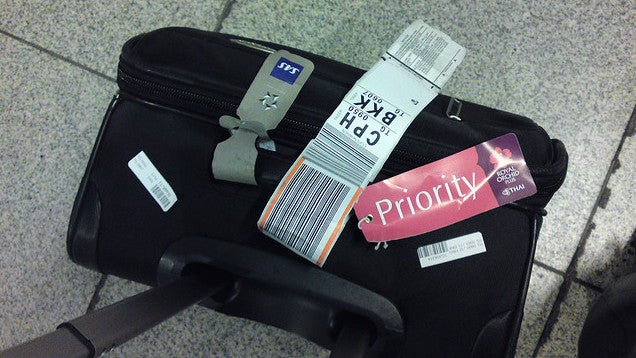
Everyone has responsibilities with work and their personal life. It's easy to think one must give way to the other, but it's possible to make them work together in a way that satisfies the demands of both. Before you can do that you'll need to think about your priorities and write them down. With a clear set of general priorities you can plan tasks to fulfill more than one priority at once. So think about yours and write them down. Here are some to start:
- Health
- Social life
- Work
- Family
- Education
- Pets
- Fun
- Rest
Some of these will work for you while others won't, and you might have plenty to add. Either way, it's important to know what your priorities are. Having a list of what's important to you will give you a starting point for planning for everything.
Plan Your Day with Work and Life In the Same Agenda

Once you have your priorities set, plan out your day. Include everything you may want to accomplish, even activities you normally wouldn't: a phone call to Mom, time to decompress, a dinner out with friends, and so on. Start thinking of all these things the same way you would a scheduled lunch break. Make time for all of them. They are your priorities after all, and many of us make the mistake of not planning for those needs too.
Jen Uscher points out another benefit on WebMD:
When you plan your week, make it a point to schedule time with your family and friends, and activities that help you recharge.
If a date night with your spouse or a softball game with friends is on your calendar, you'll have something to look forward to and an extra incentive to manage your time well so you don't have to cancel.
In addition, when it's time to plan your day, don't use categories like "work, personal, home" that separate your tasks. Instead, force yourself to think in terms of time by making one to-do list for your day that combines each task from each area of your life in one place. You want to focus on how you can accomplish more than one goal at once, so don't limit yourself to thinking work, home, and personal goals are all separate. Instead figure out how to bring them together and accomplish them simultaneously to save time.
Find Time in Your Schedule at Work that You Can Make Personally Productive

Most of our work schedules are pretty stringent, but there are always holes that you can find to be more productive in your personal life. If you have the luxury of snacking on the job, for example, then you can probably find time for a full meal while you work and then use your lunch hour to work out, see a doctor or therapist, or talk to an old friend or a family member.
That alone gives you an extra hour for something else you can do once you leave the office, or at least helps you find time for something you previously felt too busy to handle. It also gives you the opportunity to do something that makes you happy while at work, which makes work feel like less of an interruption and more fulfilling. Sit down and examine your normal workday, and see if there are life tasks that you can integrate into it.
Plan Tasks that Kill Two Birds With One Stone

One of the best things you can do to manage your time is find tasks that fulfill multiple needs at once. You already do this without realizing it: going to dinner with a friend fulfills a health and social need simultaneously, and walking your dog fulfills a health and pet need simultaneously. Actively looking for more ways to kill two birds with one stone is far more powerful than passively accepting the benefits as a product of circumstance. For example, the next time you walk your dog, think of something else you can do along the way, like brainstorming a big pitch for work.
When you plan the day ahead, look at your tasks and goals for the day and focus on integrating as many of them as possible so you get the most benefit from the time you spend on them. The point of work-life integration isn't to let work infiltrate your life, but rather to find an even balance across the board so you can stop feeling like one area of your life is getting in the way of another. It requires a lot of life examination to get started, but it gets easier. In the end, you'll feel happy that you're able to handle so many different areas of your life, and on the best days you'll look back and be impressed at how much you accomplished for work, yourself, and your home or family.
Photos by Tony Alter, Fons Heijnsbroek, Karl Baron, Courtney Dirks, and MilitaryHealth.
Tuesday, December 30, 2014
This Is the Best of Lifehacker 2014

At the end of every year, we take a look back at our most popular posts to reminisce (and to help you catch any stuff you might have missed). Here's one last look at our best posts in 2014.
This year we had some great how-to guides, clever uses, DIY projects, downloads for all platforms, and a whole lot more.
Most Popular How-To Guides of 2014

We cover a lot of things here at Lifehacker, but we love nothing more than a good step-by-step guide. Here are our best how-tos from the year, from tech to life skills and everything in between.
Most Popular Food Hacks of 2014

If there is one thing everybody loves, it's food—and it's been a great year for food hacks here at Lifehacker. Here are our best tips and tricks for whatever you're cooking up. You better be hungry!
Most Popular DIY Projects of 2014
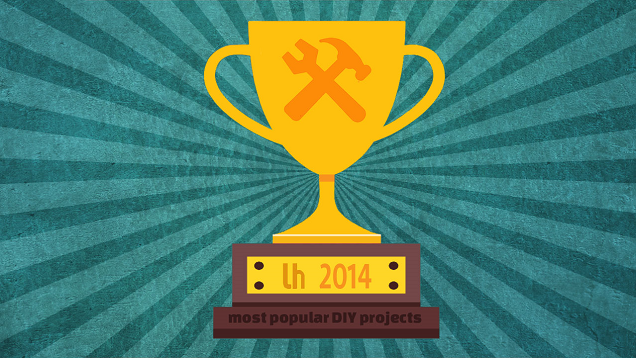
We love good DIY projects at Lifehacker, but they can be easy to miss if you're not planning a project at the moment. From computers to the household, these are the most popular DIY projects we featured this year.
Most Popular Personal Finance Tips of 2014

Money: If you need it, you don't have it. If you have it, you need more of it. Or maybe that's something else. In any case, everyone needs help managing, saving, and investing their money. Here are the best tips we had this year for keeping your financial house in order.
Most Popular Hive Fives of 2014

The Hive Five series is one of our most popular, and this year was a great year for it. We rounded up the best options in just about every possible category, from hardware to software to gadgets and peripherals. Here's a look at our best from the past year.
Most Popular Windows Downloads and Posts of 2014
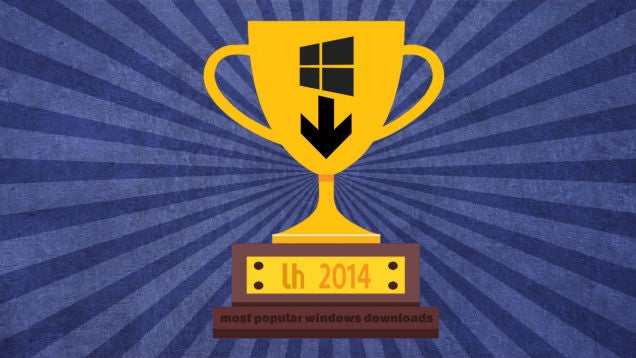
Each year, we discover new downloads for Windows and highlight the tips and guides that can help you make the most of your system. Here were our most popular Windows posts this year.
Most Popular Mac Downloads and Posts of 2014
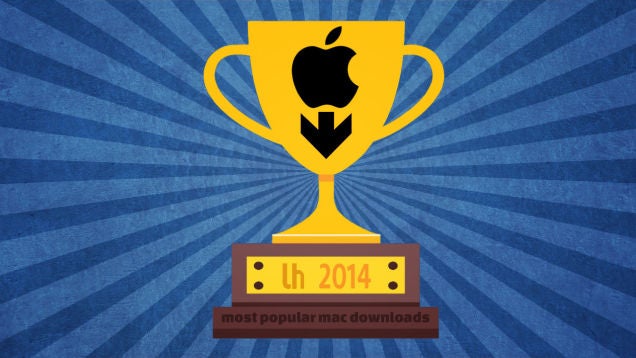
The Mac saw a new (free!) operating system this year alongside all kinds of great other apps. Let's take a look back at our biggest and best Mac posts of the last year.
Most Popular Android Downloads and Posts of 2014

Lollipop. Material Design. Android Wear. 2014 has been a huge year for Google's favorite OS. That gives us plenty of new stuff to tinker with. Here are some of our best posts on the topic from the past year.
Most Popular iPhone Downloads and Posts of 2014

The iPhone saw all kinds of big news this year, from the release of iOS 8, to jailbreak apps and tweaks. Let's take a look back on the year's best posts.
Most Popular Chrome Extensions and Posts of 2014

Chrome quickly skyrocketed from a Google pet project to the most popular browser in the world. Here are some of our most popular Chrome extensions and guides from Lifehacker in 2014.
Most Popular Firefox Extensions and Posts of 2014

Firefox may not be as popular as it once was, but we still love it here at Lifehacker. Here were the most popular Firefox extensions and guides we featured in 2014.
Most Popular Featured Desktops and Home Screens of 2014
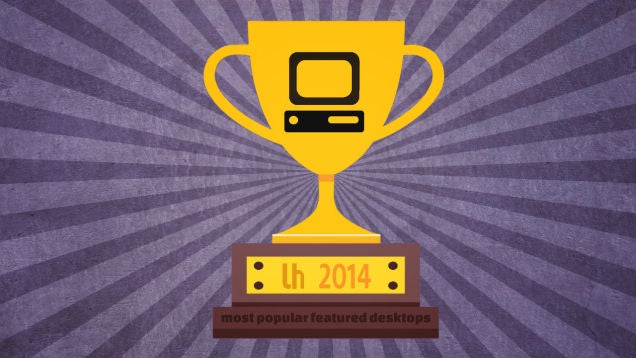
Every week, we feature customized desktops and home screens submitted by readers that show off beautiful wallpapers and great customization and UI tweaks. Sometimes they're fun, sometimes they're functional, and sometimes they're both, but 2014 was a great year for all of them. Here's a look at the most popular ones.
Most Popular Featured Bags and Workspaces of 2014
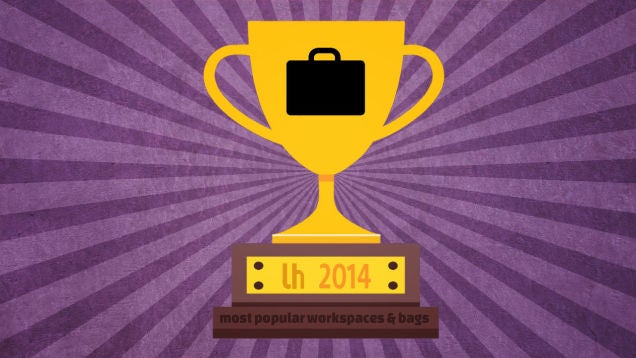
Every week, we highlight interesting workspaces as well as what's in others' everyday carry bags. Here are the most popular featured bag and featured workspace posts of the year.
Most Popular Guest Posts of 2014
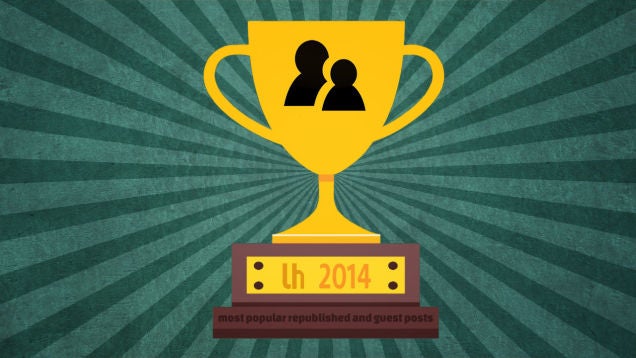
We're lucky to feature a wide variety of writers from all around the web here on Lifehacker, dolling out career advice, how-to tutorials, life lessons, and more. Here are some of the best guest posts from the past year.
Most Popular Explainers of 2014

In between tips and how-tos, we also often do "explainers," where we break down complicated topics into simple language. Our goal is to help you understand how these difficult topics work, and show you what you can do with the knowledge. Here are our best from the past year.
Most Popular Clever Uses and MacGyver Tips of 2014
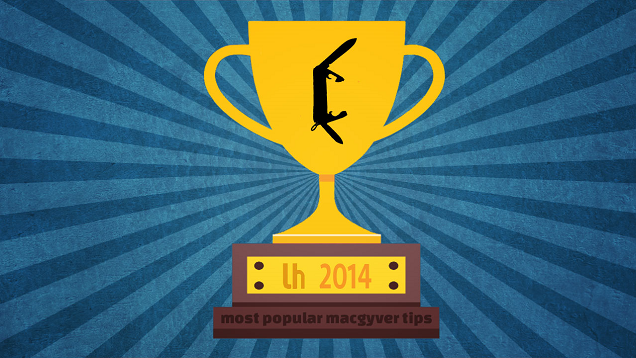
This was a great year for being clever and coming up with different tricks you can do with things around the house. The right tools should be used for the right job, but sometimes being creative is better than any tool out there.
Most Popular Interviews of 2014
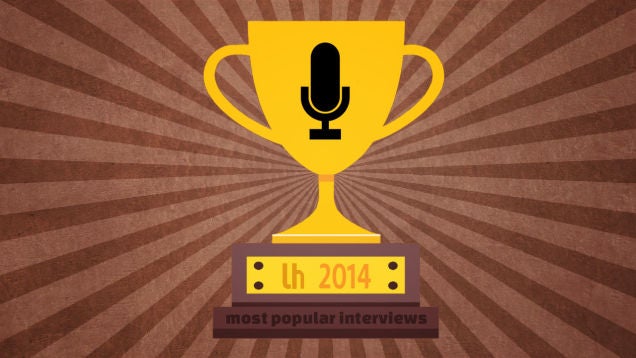
Every week we have the pleasure of highlighting some of our productivity heroes, from company CEOs to artists and writers who manage to accomplish more than any reasonable human being should. Let's look back at some of our most popular interviews of 2014.
Most Popular Features and Essays of 2014
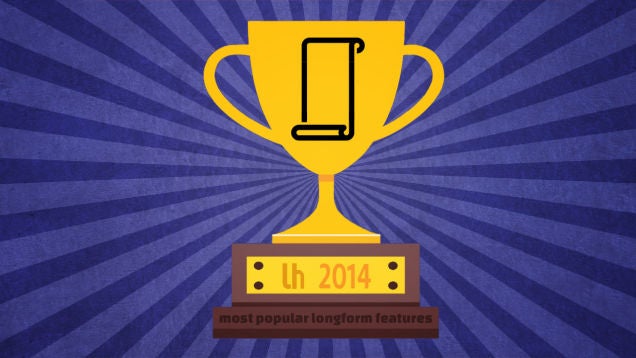
We pride ourselves on how-tos and explainers at Lifehacker, but some articles don't quite fit into either category. Perhaps they're personal accounts of life lessons, or maybe they're rants about a popular issue of the day. Here are some of the year's best features and essays along those lines.
Most Popular Top 10s of 2014

Every day at Lifehacker we share new tips and tricks to help you live life better, but it isn't easy keeping up with all of them. That's where our weekly roundup of our favorite tips comes in handy. Here are the most popular top 10 lists of 2014.
Want to catch up on the best posts of past years? See our roundups for 2013, 2012, 2011, 2010, 2009, 2008, and 2007.